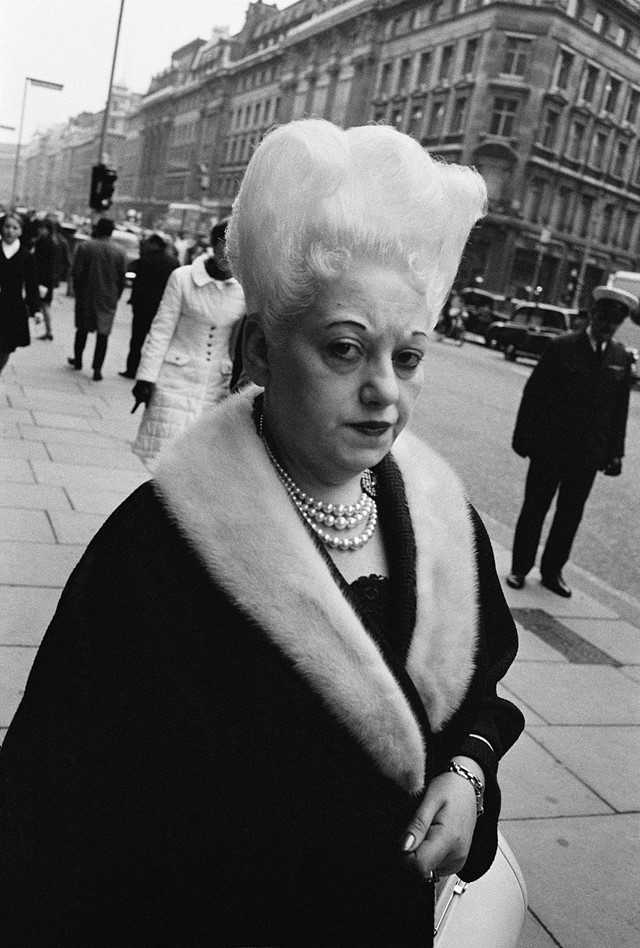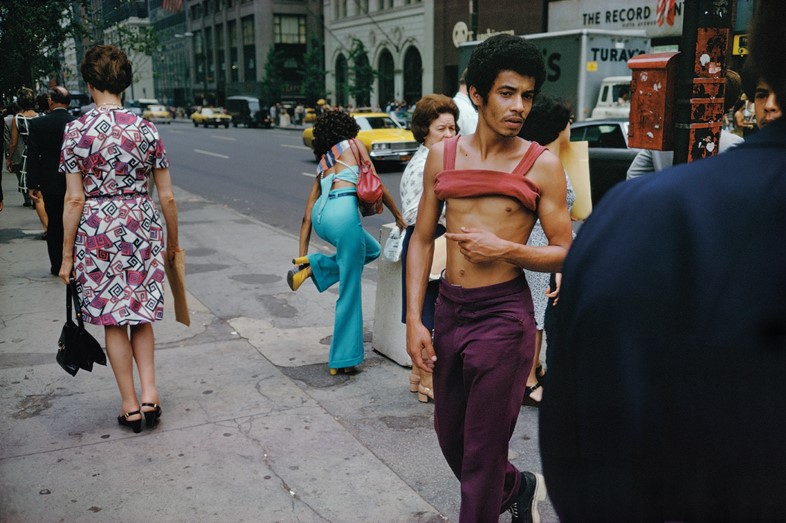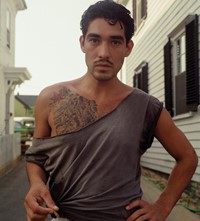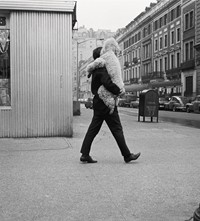Alongside a preview of his new book, ‘Joel Meyerowitz: Where I Find Myself’, the photographer gives us a masterclass in the medium
The street has always been a place where life unfolds unexpectedly. For the past 56 years, American photographer Joel Meyerowitz has tried his best to capture as much of it as he can.
Now considered one of the founding fathers of the medium, Meyerowitz found himself at the epicentre of a movement when he first picked up a camera in early 1960s New York City. Shooting in colour was considered crass back then – used only for commercial purposes – but as it was all that he had to hand, he was able to capture the chaos and jubilance of a generation in crisp, vibrant detail. It would be the start of a highly influential career that saw Meyerowitz create some of the most admired collections of 20th century photography, including Cape Light, his series shot over a summer in Cape Cod, Massachusetts; and his beautiful photos of shorelines at dusk in Bay/Sky.
Joel Meyerowitz: Where I Find Myself is the biggest published retrospective of his photography to date. Presented to the reader in reverse order, it chronicles Meyerowitz’s best work, from his sobering photos of a post-9/11 New York City in mourning to his romantic, mid-20th century shots of the carefree lives of those living in towns and cities across America.
“[It was] a bittersweet and yet fascinating experience to look at 50,000 photographs and say goodbye to most of them,” says Meyerowitz. All of that work brought him to where he is today. Having recently celebrated his 80th birthday, he still continues to take still-life photographs of objects he finds in the junkyards of his Tuscan town.
Now, Meyerowitz says times have changed for street photographers – particularly those looking to capture an organic, fleeting moment. “[Back then], you could feel the sensual mix on the street,” he says. “Today, it’s very different. Most people have a cell phone to their ear, or are communicating – they think – with others. They’re somewhat distanced from the real world, so it’s not as sensual, erotic or playful as it used to be.”
That doesn’t mean modern photographers can’t adopt the style to make beautiful pictures, though. Here, Joel Meyerowitz shares five tips on how to take masterful, honest photographs of life on the street.
1. Be prepared to act on impulse
“The street is a place where you can expect the unexpected, so [be] prepared. Walk the street with a camera in your hand, cocked and ready to go. When any suggestion or instinct arises, move to it as fast as possible. Don’t stop to think ‘should I, or shouldn’t I?’ because any hesitation is the loss of an unexpected opportunity.”
2. Ask yourself: ‘What am I doing out here?’
“I have the thrill of being conscious. Most of the time we’re walking about daydreaming, hoping something interesting thing will happen – and then it does: unexpected visions that come from the mess of everyday living. Suddenly, my mind is alive and I’m aware of everything on the street: from the play of light, to the movement of people, to the look of the architecture. The excitement allows me to press the button and say ‘yes’, again and again.”

3. Connect disconnected things
“If you think of the camera frame moving down a street with you behind it, entering into the frame at any moment might be a bike whooshing by or a mother pushing a poodle in a baby carriage, [but] you might not see it from where you are. You’re putting a frame around things that have no reason to be together but only you can see the connections between them. Out of that comes the shock, surprise and freshness of your vision.”
4. Carve out your identity
“Look at the work of the people you respect to [find your] common thread. Try to pick out the pictures that really [represent] you – not the pictures that look like something you’ve seen in a magazine, or in someone else’s folio, but the ones that show you’re different from everybody else. If you can find your identity, you’ll find that you’re an artist.”

5. Be vocal
“It’s a way of making [your subject] glow, so that I stay aware of them. Street photography’s a solitary action; by vocally identifying the things you see, it quickens the mind. Photography captures the things that disappear right in front of our eyes: ordinary life showing us moments of beauty, flickering like stardust and then gone. Only a camera can hold on to them.”
Joel Meyerowitz: Where I Find Myself, published by Laurence King, is out now. Sign-ups are also open for Joel’s Masters of Photography course.















